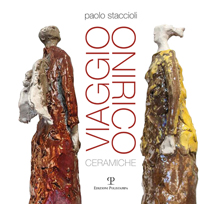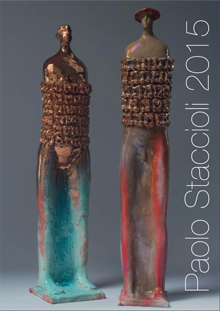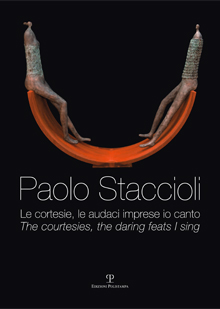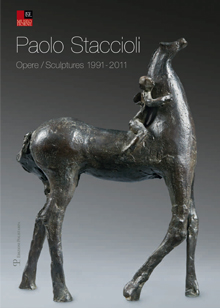Ricerca Veloce
Ricerca Avanzata
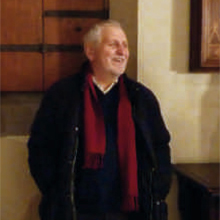
Paolo Staccioli
Paolo Staccioli è nato a Scandicci (Firenze) nel 1943. Si dedica fin dall’adolescenza alla pittura e allestisce la sua prima mostra personale nel 1973. Dal 1983 al 1987 continua il lavoro pittorico e espone in diverse gallerie, ma è alla fine degli anni ’80 che comincia le prime esperienze con la ceramica su bassorilievi in terracotta. Si dedica alla sperimentazione sugli smalti e mediante la tecnica della cottura a riduzione d’ossigeno, sotto l’insegnamento dell’artigiano faentino Umberto Santandrea, inizia la ricerca sui lustri per mezzo di terre ossidi e sali. Proseguendo su tale ricerca abbandona definitivamente la pittura, trasferendone i soggetti su vasi e altri supporti ceramici. Sarà poi la volta delle prime esperienze plastiche, grazie alle quali negli anni ’90 arrivano interessanti risultati. In questi anni partecipa numerose volte ad Arte Fiera di Bologna, alla Festa della Ceramica di Montelupo Fiorentino, alla Biennale di Ceramica di Faenza, intensificando l’attività espositiva in gallerie e musei, sia in Italia che nel resto d’Europa; nel 1999 partecipa al Festival Internazionale della Ceramica di Aberystwyth (Galles) e al Ceramic Millenium Festival di Amsterdam (Olanda). Nel 2000 modella un grande Cavallo cavalcato da un putto alato, fusione in bronzo che inaugura il Parco Museo di Poggio Valicaia, sulle colline di Scandicci. Numerose ancora le esposizioni in Italia e all’estero, fra cui al Museo Richard Ginori, Firenze, il Salone Internazionale di Arte Contemporanea di Kirchberg, (Lussemburgo) e Lineart a Gent (Belgio). Negli studi di Scandicci e di Montelupo, la sua ricerca prosegue oggi nella modellazione di nuovi personaggi, come i Guerrieri, i Viaggiatori su carri e su barche, i Cardinali, con nuove figurazioni dipinte a lustro su vasi e altri manufatti ceramici. È del 2006 la personale al Museo degli Argenti e Museo delle Porcellane di Palazzo Pitti a Firenze e la scelta di una sua opera come dono ufficiale al Presidente della Repubblica Carlo Azelio Ciampi. Nel 2007 espone in una personale al Museo Archeologico di Fiesole (Firenze) e partecipa alla collettiva “Sculture da indossare” promossa dal Comune di Forte dei Marmi (Lucca). Il 4 giugno 2008 si apre al pubblico una sua mostra personale all’Istituto Italiano di Cultura di New York. Nell’ottobre del 2008, in occasione del ventennale della Scuola Superiore di Sant’Anna di Pisa, una sua opera viene donata al Presidente della Repubblica Giorgio Napolitano. Tra le esperienze più recenti sono da annoverare la partecipazione alla mostra Memorie dell’Antico nell’arte del Novecento tenutasi nel 2009 al Museo degli Argenti di Palazzo Pitti di Firenze e le esposizioni personali a Washington presso l’Ambasciata Italiana (aprile 2009), a Parigi presso la Galleria Selective Art (settembre 2009), a New York presso lo Spazio 522 e alla Kens’ Art Gallery di Firenze (entrambe nella primavera del 2010). Nel settembre 2010, infine, una sua personale si è tenuta a Pomarance, dove a breve un guerriero in bronzo sarà collocato davanti al palazzo comunale.
Born in Scandicci (Florence) in 1943, Paolo Staccioli began his career as an artist in the 1970s, starting out as a painter and soon attracting attention at the local level. In the early 1990s, the need to experiment with a new artistic vocabulary prompted him to move to Faenza, to the workshop of a local ceramist and potter called Umberto Santandrea, where he learnt the techniques and skills associated with this particular art. It was here that Staccioli produced his first vases, initially adopting the glazed ceramic technique then gradually experimenting with “reduction” firing, which allowed him to achieve an extraordinary iridescence and sheen. Having fully mastered the technique, Staccioli then set up his own studiocum-workshop in Scandicci on the outskirts of Florence, where he continued under his own steam to experiment on a daily basis with the use of fire and of copper oxides, producing a vast range of vases which he then decorated with imaginary figurative narratives fixed for eternity by an enamel sheen. These works earned him his first true recognition and success at personal and collective exhibitions as well as at important cultural events: his ceramics with their strong metallic effect and sparkling enamel finish soon won praise for their elegance and originality not only in Florentine art circles but throughout the country. The characters that populated the surfaces of his ceramics in this phase soon acquired a third dimension, translating into sculptures yet without losing their fairy-tale aura, their extraneity to all notion of time or place: idealized shapes reminiscent of pre-Roman statuary, to which the polychromy of ceramic added a vigorous effect of contrasting masses. Warriors, travellers, cardinals and horses soon joined the already varied throng of imaginary figures and began, in the second half of the 1990s, to add their lively touch to major public and private collections both in Italy and abroad. In the early part of the new millennium, in his eagerness to experiment with new materials and with different expressive registers thanks to the use of those materials, Staccioli began to translate his ideas into the more lasting medium of bronze , moving away from research into copper oxides and towards metallic patinas. It was in this more recent phase that his figures took on a previously unknown monumentality, which tends to set his horses and his warriors even more firmly in a dimension outside of time. Staccioli has won an enormous amount of praise and recognition both from critics and from the general public, especially over the past ten years, and he has taken part in awards and exhibitions that have won him a place of absolute prestige in the field of contemporary art. His recent exhibitions include Le gioiose ceramiche di Paolo Staccioli, organised by Ornella Casazza at the Museo delle Porcellane in Palazzo Pitti in Florence (October 2005 - June 2006), and a personal exhibition entitled I segni della Terra, inaugurated at the Museo Archeologico di Fiesole on 2 June 2007. One of his works was chosen as the Tuscan Regional Authority’s official gift to President of the Republic Carlo Azeglio Ciampi in April 2006, and at the end of the year, in November, another of his works was added to the permanent collection of the Museo Internazionale delle Ceramiche in Faenza. He travelled to China in the spring of 2008 in response to an invitation from the director of the International Ceramic Art Museum in Fùpíng, commencing fruitful cooperation with that institution and producing several works while he was there, all of which are now part of the museum’s permanent collection. Other ceramic creations of his have been selected as prizes for lifetime achievement awards to two distinguished protagonists of the “Estate Fiesolana” festival: American film director Spike Lee and actor Dario Fo. A personal exhibition of his work was inaugurated at the Italian Cultural Institute of New York on 4 June 2008, and to tie in with the event, two bronze warriors were chosen by American collector and magnate Jack Larsen for his Longhouse Reserve sculpture park in East Hampton. A work of Staccioli’s was also offered to President of the Republic Giorgio Napolitano to mark the twentieth anniversary of the Scuola Superiore di Sant’Anna in Pisa in October 2008. His more recent experiences include participation in an exhibition entitled Memorie dell’Antico nell’arte del Novecento at the Museo degli Argenti in Palazzo Pitti in Florence in 2009, and his personal exhibitions at the Italian Embassy in Washington (April 2009), at the Selective Art Gallery in Paris (September 2009), at Spazio 522 in New York and at Kens’ Art Gallery in Florence (both in the spring of 2010). In September 2010, he held a personal exhibition of his work in Pomarance, where a bronze Warriors has been erected outside the town hall. In 2011 his works were displayed in two new exhibitions: Vagare nel mito held at the Sala delle Colonne in the Town Hall of Pontassieve and Paolo Staccioli. Opere / Sculptures 1991-2011 at the Museo Horne in Florence. During the months of July and August, Staccioli’s works were exhibited in Piazza Duomo at Pietrasanta. In May of 2012 one of Siena’s historic quarters, the “Nobile Contrada del Nicchio” hosted his personal exhibition Il guerriero e la farfalla. Paolo e Paola Staccioli in the former Convent of Santa Chiara. In that same year Staccioli was Guest of Honour at “Contemporanea”, Forlì, and at “Imagina. Arte in Fiera”, Reggio Emilia. In May of 2013, his bronze Warrior was installed in the Croce Azzurra square at Pontassieve (Florence) and in September of the same year a personal exhibition was inaugurated at the Ex Mulino Antonibon di Nove in conjunction with the Ceramics Festival, while in December the exhibition Paolo Staccioli. Il Primato della storia opened at the Tettuccio Spa in Montecatini (Pistoia).
Vedi anche...
Paolo Staccioli
- € 14,25
- € 15,00
Paolo Staccioli 2015
- € 11,40
- € 12,00
Paolo Staccioli
- € 20,40
- € 24,00
Paolo Staccioli
- € 20,40
- € 24,00
